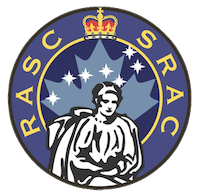Kiyotsugu Hirayama was born on October 13, 1874 at Sendai, which has been the largest city in the north-east district of Japan. He was educated there up to the age of 20. He studied foreign languages and basic science as well as classical Chinese which intellectual Japanese should have mastered. He left Sendai to enter the University of Tokyo in 1894. He succeeded in the entrance examination, majored astronomy and graduated it in 1897. When he finished the university, the department of astronomy and the Tokyo Astronomical Observatory had almost common staff members as well as a common facility and office building at Azabu, Tokyo.
K. Hirayama has to be distinguished from Shin Hirayama (1867-1945), the first Japanese astronomer to discover an asteroid. Although of the same surname, the two were not related. On the other hand K. Hirayama was engaged in latitude observations. In fact one of the first major jobs for the Tokyo Astronomical Observatory was to establish the geodetic datum of Japan at Azabu by determining the latitude and longitude by astronomical observations. K. Hirayama published several papers on latitude observations in Astronomische Nachrichten. In 1906 the Japanese government sent him to Sakhalin to determine the 50 degree latitude border between Japan and Russia after the 1904-1905 Japan-Russia war. He was promoted to associate professor of astronomy in 1906. The Tokyo Astronomical Observatory also compiled astronomical almanacs and K. Hirayama was engaged in computing ephemerides of the moon and planets.
In 1916 Hirayama was sent to U.S. to study celestial mechanics at Yale University with E.W. Brown. At Yale he spent some time to compute a part of Brown's lunar table. And during his stay at Yale his interest was directed to asteroids and he obtained some ideas on families there. After he came back to Japan, he published his first paper on the asteroid families (1918) and he was promoted to professor in 1920.
K. Hirayama was a great scientist in early 20th century, when the research activity in science in Japan was still premature. His work was one of a few Japanese contributions in those days which had high reputation internationally.
He retired from the university at the age of 60 by the age-limit regulation in 1935 and was elected a member of the Imperial Academy of Japan in that year. He died in 1943. His obituary by Hagahira was published in the Astronomical Herald (in Japanese) in 1943 and Monthly Notices of Royal Astron. Soc. (1947.)
(Abridged from 'Kiyotsugu Hirayama and His Families of Asteroids' by Y. Kozai, Astronomical Society of the Pacific Conference Series 1994.)
A Hirayama family of asteroids is a group of minor planets that share similar orbital elements, such as semimajor axis, eccentricity, and orbital inclination. The members of the families are thought to be fragments of past asteroid collisions. Strictly speaking, families and their membership are identified by analysing the so-called proper orbital elements rather than the current osculating orbital elements, which regularly fluctuate on timescales of tens of thousands of years. The proper elements are related constants of motion that are thought to remain almost constant for times of at least tens of millions of years.
Professor Hirayama, of the Astronomical Observatory, Tokyo, was elected a Corresponding Fellow of the Royal Astronomical Society of Canada on 1907-10-01. Minutes of that meeting do not clarify whether Kiyotsugu or Shin Hirayama was the intended. An RASC membership list from 1931 lists Shin Hirayama, but Looking Up lists Kiyotsugu Hirayama.
The minor planet (1999) Hirayama is named for Kiyotsugu Hirayama.

